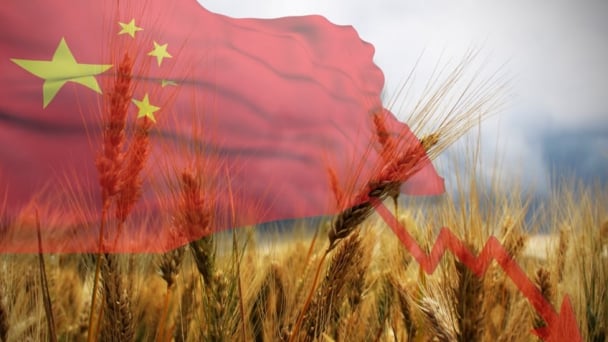May 8, 2025 | 01:00 GMT +7
May 8, 2025 | 01:00 GMT +7
Hotline: 0913.378.918
May 8, 2025 | 01:00 GMT +7
Hotline: 0913.378.918

Mangrove forest in Xuan Thuy National Park, Nam Dinh province. This type of forest accounts for about 3% of our country's total forest area but can absorb four times more carbon than terrestrial forests. Photo: Tung Dinh.
Vietnam has received a USD 51.5 million payment for verified emissions reductions (carbon credits) for reducing deforestation and forest degradation (commonly known as REDD+) and for enhancing carbon stored in forests through reforestation and afforestation, making it the first country in the East Asia Pacific region to receive a results-based payment from the World Bank's' Forest Carbon Partnership Facility (FCPF).
The payment was made to Vietnam to reduce 10.3 million tons of carbon emissions between February 1, 2018, and December 31, 2019. It is the most significant payment to date made by the FCPF for verified and high-integrity carbon credits.
The payment will benefit over 70,000 forest owners and approximately 1,500 communities near the forest. It will be distributed according to a robust benefit-sharing plan designed through a consultative, participatory, and transparent process.
The program generated 16.2 million verified carbon credits between 2018 – 2019, which is 5.9 million more than the 10.3 million contract volume in the Emission Reduction Payment Agreement (ERPA). The World Bank has issued a call option notice to buy 1 million carbon credits beyond the contracted amount.
"The success of this REDD+ program brings Vietnam closer to delivering our ambitious Nationally Determined Contributions under the Paris Agreement while protecting areas of vital importance to biodiversity conservation," said Minister of Agriculture and Rural Development Le Minh Hoan.
Vietnam is already generating emission reductions over the volume contracted with the FCPF and can sell the credits to third-party buyers through bilateral agreements or carbon markets. The country can also use the excess credits to fulfill its Nationally Determined Contributions (NDC) or retire them, a net climate benefit.
"This landmark payment marks another step for Vietnam towards joining the global carbon credit market and opens a new opportunity to finance the country's ambitious climate commitments and targets," said World Bank Country Director for Vietnam Carolyn Turk.
Vietnam's' emission reduction program protects most of the country's tropical forests, covering 3.1 million of 5.1 million hectares of land in the program area.
These forests are of significant ecological importance, encompassing five internationally recognized conservation corridors. The area is also home to 12% of Vietnam's' population, including 13 ethnic minority groups and many forest-dependent communities. Almost one-third of people in the region live below the national poverty line.
The program is increasing the extent and quality of forest cover in collaboration with local communities through improved forest management, investment in the forest sector, and enhancement of agricultural policies.
Launched in 2008, the FCPF has worked with 47 developing countries across Africa, Asia, Latin America, and the Caribbean, along with 17 donors who have made contributions and commitments totaling USD 1.3 billion.
The FCPF is a global partnership of governments, businesses, civil society, and Indigenous Peoples' organizations focused on reducing emissions from deforestation and forest degradation, forest carbon stock conservation, the sustainable management of forests, and the enhancement of forest carbon stocks in developing countries, activities commonly referred to as REDD+.
Vietnam has great potential in the carbon market and exploiting biodiversity values. One is the mangrove forest in Xuan Thuy National Park, Nam Dinh province.
Compared to terrestrial forests, mangroves have four times the ability to absorb carbon. This wetland is also located on the flight path of migratory birds from the North. From around October to April every year, many rare bird species, such as spoonbills and oriental white stork... come to Giao Thuy.
Xuan Thuy National Park has more than ten habitat types, but mudflats and natural mangrove forests have the highest biodiversity value.
In Xuan Thuy National Park's Core Zone, a portion of unoccupied land is used for shrimp-rearing ponds and extensive clam-rearing areas. The land in the Buffer Zone can be divided into several categories: residential land, agricultural farming land, aquaculture land, mangroves, and flats, as well as a few mangrove areas along the river canals.
Hunting birds and other animals has been prohibited but has decreased for many years. Farmers are also forbidden to graze their buffaloes in the Core Zone.
To prevent the over-exploitation of natural resources, projects like the Mushroom Club aim to create alternative livelihoods. Also, the National Park has the task of raising awareness in the communities of the Buffer Zone to care about the environment and protect it long-term.
Translated by Tuan Huy

(VAN) Agricultural exports recovered strongly in the first four months of 2025, with many products recording growth thanks to effective use of markets and new-generation FTAs.

(VAN) Global trade in agricultural products is suffering from the US trade measures and countermeasures from China, among others. This is according to the World Trade Organization (WTO).
/2025/05/05/3942-1-182949_354.jpg)
(VAN) Seafood exports in April 2025 recorded growth across many key markets but were under pressure in the U.S. due to tariff policies and competition from alternative suppliers.

(VAN) Vietnam is currently the 4th-largest seafood supplier to Singapore with the highest market share in the chilled/frozen fish fillet and fish meat segment.
/2025/04/28/0649-1-144144_372.jpg)
(VAN) The Institute of Policy and Strategy for Agriculture and Environment has recently forecast three scenarios regarding the impact of U.S. tariffs on agricultural, forestry, and fishery exports.

(VAN) World wheat trade is expected to decline significantly. The US Department of Agriculture (USDA) expects wheat trade to shrink as much as 9% in the current 2024/2025 season compared to the previous season.

(VAN) Son La province is gradually addressing key challenges regarding issuance of planting area codes, improving the quality of packing facilities, and modernizing logistics infrastructure, to achieve the goal of formal and large-scale agricultural exports.